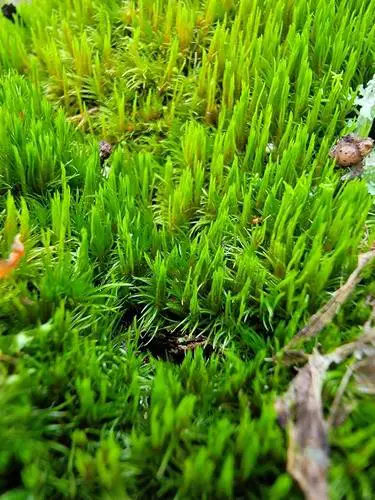
209915.jpg from: https://inpn.mnhn.fr/espece/cd_nom/4779
Introduction

403768_81c11c26.jpg from: https://www.plantarium.ru/page/image/id/403768.html
In the vast and captivating world of bryophytes, one particular moss species stands out for its unique charm and ecological significance – the Orthodicranum flagellare (Hedw.) Loeske. Belonging to the Dicranaceae family, this unassuming yet fascinating moss is commonly referred to as Orthodicranum. Let’s embark on a journey to unravel the secrets of this remarkable plant and explore its intricate world.
Background
Before delving into the specifics of Orthodicranum flagellare, it’s essential to understand the broader context of bryophytes. These non-vascular plants, which include mosses, liverworts, and hornworts, are often overlooked but play a crucial role in various ecosystems. They are among the oldest land plants on Earth, dating back to the Paleozoic era, and have adapted to thrive in diverse environments.

Dicranum_flagellare_MA059-wet_1612272922.jpg from: https://bryophyteportal.org/portal/taxa/index.php?taxon=158733
Main Content
Morphology and Identification
Orthodicranum flagellare is a small, acrocarpous moss that forms dense, cushion-like tufts or mats. Its stems are erect, reaching heights of up to 5 centimeters, and are covered in slender, yellowish-green leaves. These leaves are characterized by their distinctive flagellate appearance, with long, hair-like tips that give the moss its unique and whimsical look.
Global Distribution and Habitat
This moss species has a widespread distribution, occurring across various regions of the Northern Hemisphere, including Europe, Asia, and North America. It thrives in a variety of habitats, such as moist, shaded areas in forests, on rotting logs, and even on soil or rocks in open areas. Orthodicranum flagellare is particularly well-adapted to acidic environments, making it a common sight in coniferous forests and bogs.
Ecological Roles and Adaptations

medium.jpeg from: https://www.inaturalist.org/taxa/161856-Dicranum-flagellare
Despite its diminutive size, Orthodicranum flagellare plays a vital role in its ecosystem. Its dense mats help retain moisture and create microhabitats for other organisms, such as insects and fungi. Additionally, this moss contributes to soil formation and nutrient cycling by breaking down organic matter and releasing essential nutrients.

Dicranum_flagellare.jpg from: https://wildflowersearch.org/search?&tsn=16776
One of the remarkable adaptations of Orthodicranum flagellare is its ability to survive periods of desiccation. During dry spells, the moss can enter a state of dormancy, curling its leaves inward to minimize water loss. Once moisture returns, it quickly revives, showcasing its resilience and ability to thrive in challenging environments.
Case Studies/Examples
In a study conducted in the boreal forests of Scandinavia, researchers found that Orthodicranum flagellare played a crucial role in maintaining the diversity of understory plant communities. Its dense mats provided a suitable microhabitat for the establishment and growth of other plant species, contributing to the overall biodiversity of the ecosystem.

Dicranum_flagellare_35_1589289994.jpg from: https://bryophyteportal.org/frullania/taxa/index.php?taxon=158733
Technical Table

240px-Orthodicranum_flagellare_blattfluegel.jpeg from: https://commons.wikimedia.org/wiki/Orthodicranum_flagellare
| Characteristic | Description |
|---|---|
| Scientific Name | Orthodicranum flagellare (Hedw.) Loeske |
| Family | Dicranaceae |
| Common Name | Orthodicranum |
Growth Form
 Dicr+flag.jpg from: https://moss-notes.blogspot.com/2011/12/dicranums.html |
Acrocarpous moss, forming dense tufts or mats |
| Leaf Morphology | Slender, yellowish-green leaves with long, hair-like tips |
Height
 orthodicranum_flagellare.jpeg from: https://www.korseby.net/outer/flora/bryophyta/dicranaceae/index.html |
Up to 5 centimeters |
| Habitat | Moist, shaded areas in forests, rotting logs, soil, rocks |
| Distribution | Northern Hemisphere (Europe, Asia, North America) |
Conclusion

Dicranum-flagellare-51-300×199.jpg from: https://ohiomosslichen.org/moss-dicranum-flagellare/
Orthodicranum flagellare, a humble yet remarkable moss species, serves as a testament to the incredible diversity and resilience of bryophytes. Its unique morphology, widespread distribution, and ecological significance make it a fascinating subject of study for enthusiasts and researchers alike. As we continue to explore and appreciate the intricate world of mosses, let us ponder this thought-provoking question: How can we better protect and conserve these often-overlooked yet vital components of our ecosystems?